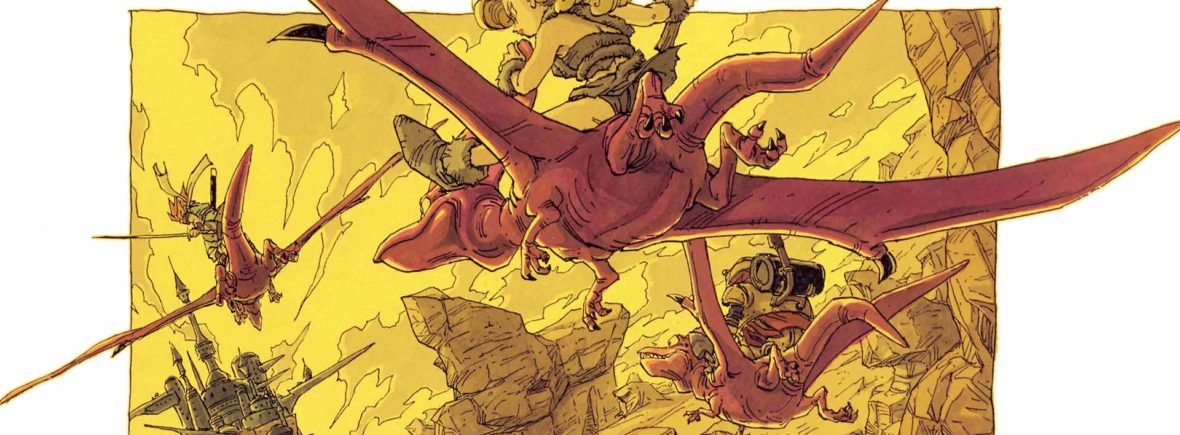Strategy in Chrono Tactics focuses heavily on positioning and the environment. Some terrain can hinder movement, some accelerates movement in one direction, and some can actually cause damage. Positioning around an enemy provides bonuses to Hit that be the difference between a miss and a critical hit.
Movement and Terrain
There are a few general types of terrain that influence movement. The Game Master will judge which category which square on a map falls into. Some squares may qualify under multiple categories, in which case the effects stack.
- Normal Terrain: No movement penalty; 1 square : 1 movement. Terrain that allows for striding. Short grass, paths, corridors, etc.
- Difficult Terrain: Double movement penalty; 1 square : 2 movement. Terrain that can be passed through with effort. High grass, brush, large rocks, marshland, rubble, etc.
- Liquid Terrain: Double movement penalty; 1 square : 2 movement. Terrain that requires swimming. By default, Evasion is reduced while swimming. Deep water, chemical vat, etc.
- (With) Directional Terrain: Double movement bonus; 2 square : 1 movement. Terrain that pushes the character forward. Conveyor belts, flowing water, high winds, etc. At the end of a Round, all creatures on Directional Terrain are moved two squares.
- (Against) Directional Terrain: Triple movement penalty; 1 square : 3 movement. Terrain that pushes the character back. Conveyor belts, flowing water, high winds, etc. At the end of a Round, all creatures on Directional Terrain are moved two squares.
- Harmful Terrain: Characters take damage (mild 5%, moderate 15%, or extreme 30% of maximum HP) each time they move through this terrain. This damage is usually Physical but sometimes Elemental. Broken glass, electrified panels, magma, etc.
- Impassable Terrain: By default, movement through these squares is impossible. Certain impassable terrain can be climbed over using the Climb action. Solid objects, tree trunks, walls, cliffs, etc.
- (Hostile) Occupied Terrain: By default, you cannot move through squares occupied by enemies. Certain traits, techniques, and monster abilities will cause a character to pass through or even end movement in a square occupied by an enemy.
- (Friendly) Occupied Terrain: By default, you can move freely through squares occupied by a friendly or neutral character.

The terrain categories are intentionally vague. I wanted to leave the nuance up to the Game Master so that unusual maps could be adapted on the fly.
Elemental Field
Taking a note from Chrono Cross, every square on a battlefield has an innate elemental alignment. This does not impact normal gameplay – though, if a Game Master is up for the added complexity, they could easily homebrew it – but some enemies have abilities related to this and players can design techniques that play on this. For instance, the Game Master could let a player design a more power Summon technique with the caveat that it only works on blue aligned squares.
- Red: Fire, Lava, Hot Ground
- Blue: Water, Ice, Swamp
- Green: Sky, Plains, Electric Panels
- Yellow: Rock, Ground, Sand
- Black: Space, Void, Magic
- White (White): Grass, Sunlight, Holy
Line of Sight
By default, Ranged attacks require line of sight to the target. Solid terrain, like walls, blocks line of sight. Certain soft terrain, like thick brush, is visible into but blocks line of sight beyond it.
Techniques with an area of effect require line of the sight to the ‘point of origin’ or the square that’s being targeted.
Creatures of the attacker’s size do not block line of sight but creatures larger than the attacker do block line of sight.
Positioning
There are two types of positioning that benefit melee attackers.
- Back Attack: Most creatures cannot effectively defend themselves from behind. Melee attacks to a target’s back usually gain a significant bonus to Hit. There are exceptions to this; particularly among certain mechanical and monstrous enemies.
- Flanking: Most creatures cannot effectively defend themselves from attack on two sides simultaneously. If two allies are flanking an target – simplified as being in melee range on opposite sides of the target – both of will usually gain a bonus to Hit. There are exceptions to this; particularly among certain mechanical and monstrous enemies.

Remember that Hit determines more than accuracy in this system! If Hit exceeds Evasion by a certain amount the result will be a Critical! This results in double damage. Some weapons deal even higher critical damage!
Technique Range
Positioning is very important for setting up a Dual/Triple Technique. This cooperative action requires units to be within the Technique’s range of the other participants and to have Line of Sight with each other.

